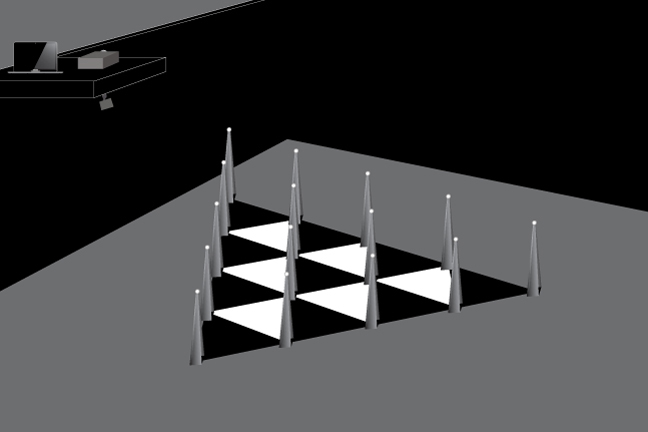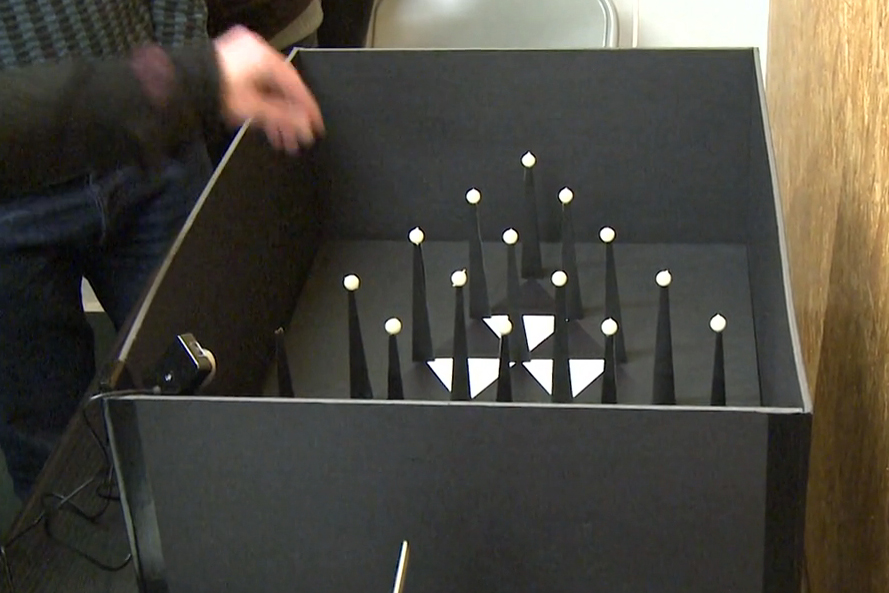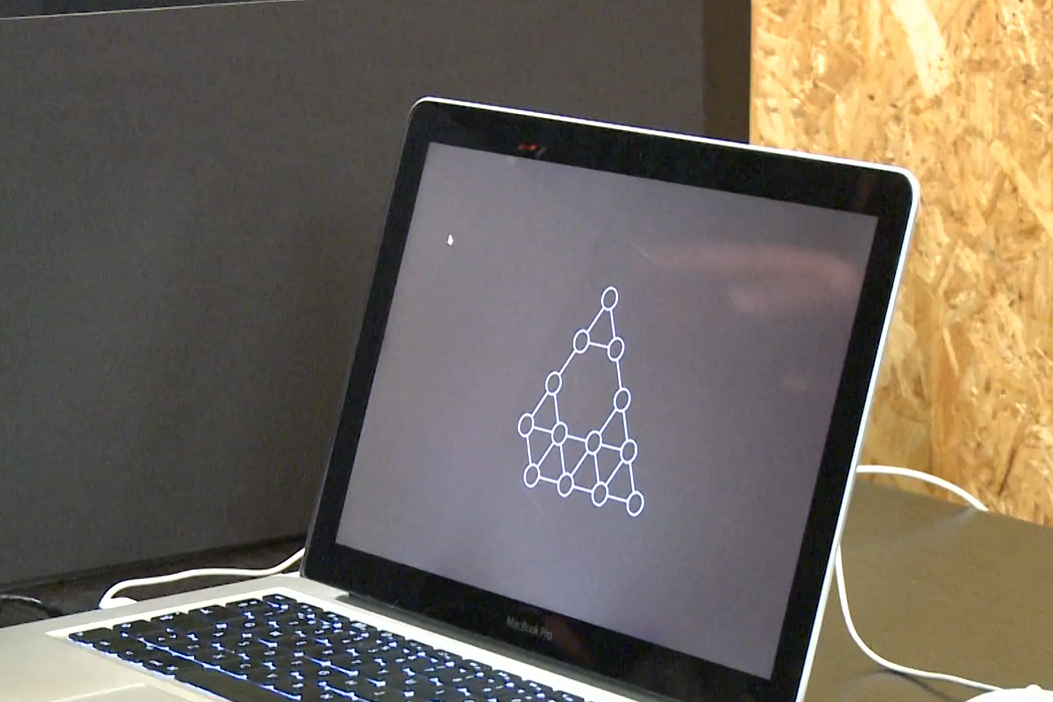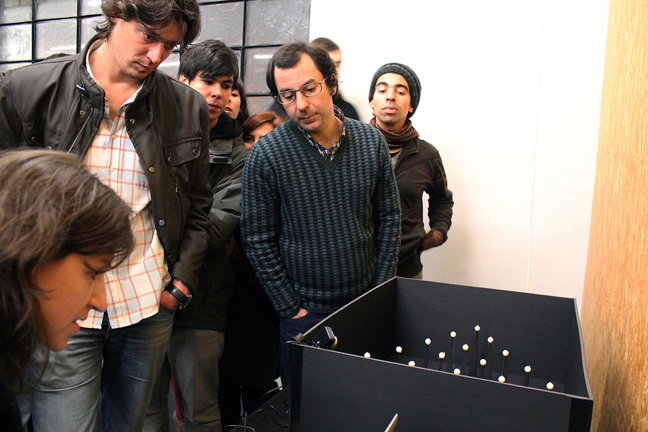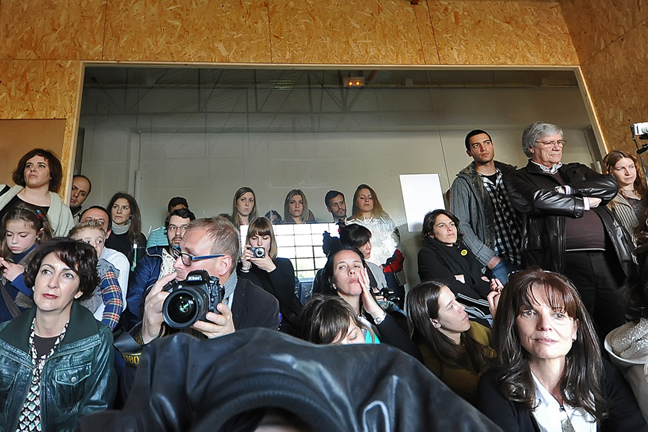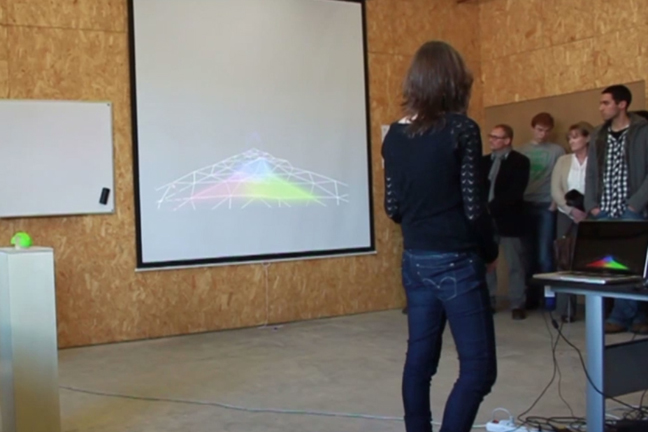Concept
Tripit is an interactive installation
Tripit is an interactive art project in which the visitor is invited to create an aural and visual experience through the placement of light-emitting spheres on top of triangular pyramids along a triangular grid. The triangle symbolizes the "play" button, starting point of a work which is alive and in permanent mutation.
It intends to explore the perception of the virtual space, relating it to the sculptural geometry of the physical space, combining them through the enjoyment of sounds and images that are created according to the choices the visitor makes.
The placement of the spheres is detected in real-time by a camera and used as input for a program running on a computer that synthesizes images and sounds, according to a virtual world model.
By establishing a connection between the spheres, the visual patterns and the sounds, the visitors will discover the rules behind the simulation, and will be able to create their own artistic composition.
Installation
Design
Prototype
Stages
Stages
This project has been developed with support from LCD (Laboratório de Criação Digital), an entity which promotes knowledge sharing and multidisciplinary projects.
LCD has organized public presentations of projects under development, showing the evolution of each project. Tripit was presented in three stages.
- Stage 1: December 2011. First prototype.
- Stage 2: May 2012. First version of the software involving image and sound synthesis.
- Stage 3: July 2012. Complete project was exhibitted.
Stage #1
Project presentation - December 2011
Public presentation of LCD supported projects, December 17th, 2011.
Stage #2
Project presentation - May 2012
Public presentation of LCD supported projects, May 5th, 2012.
Patterns #1
Patterns #1
Simulation of possibilities for patterns.
Experiments with movement and representations of patterns .
Patterns #2
Patterns #2
Representation of the base grid, which helps visitors to better perceive the relationship between placed spheres and patterns.
Base grid is animated according to the presence of spheres.
Patterns #3
Patterns #3
In this versions triangles are used replacing the circles.
A chord was added which connects an object representing a pattern to the corresponding birth place in the base grid.
Patterns #4
Patterns #4
Lines were added for linked patterns, which have spheres in common.
Sound #1
Sound #1
First experiments with sound synthesis. Each pattern produces a base sound, and also partials depending on links to other patterns.
The volume of each partial varies according to the distance between objects. Sound volume of each channel is calculated according to object position.
Images #1
Images #2
Images #3
Images #4
Exhibition
Digital Art Exhibition in Guimarães 2012 - European Capital of Culture
The Tripit project was exhibitted on July 21th/22th, 2012, at CAAA (Center for Art and Architecture Affairs) as part of the LCD projects presented at the European Capital of Culture.
Autoria
Tripit is a project started in 2011 by Gisela Ariana Nunes, aiming to explore digital art and technology
To help carry on the project she joined LCD Guimarães, a place dedicated to creativity, experimentation and multidisciplinary collaboration in the field of digital arts and multimedia.
She has also counted on the collaboration of Paulo Sérgio Almeida, Lecturer at University of Minho.

Gisela Ariana Nunes
Gisela Ariana Nunes is currently an independent designer. She holds a degree in Multimedia Design from ESAP Guimarães and a post graduate course on Digital Design from the School of Arts, Portuguese Catholic University. She is currently attending the Master program in Technology and Digital Art, from University of Minho. Her present interests are focused on how technology can influence life and enable the creation of digital artworks involving interaction with people.

Paulo Sérgio Almeida
Paulo Sérgio Almeida is currently a Lecturer at the Department of Informatics of University of Minho where he lectures since 1990. He obtained an MSc in Electrical Engineering from University of Porto in 1994 and a PhD in Computer Science from Imperial College, London in 1998. His research activities are in the area of distributed systems.
